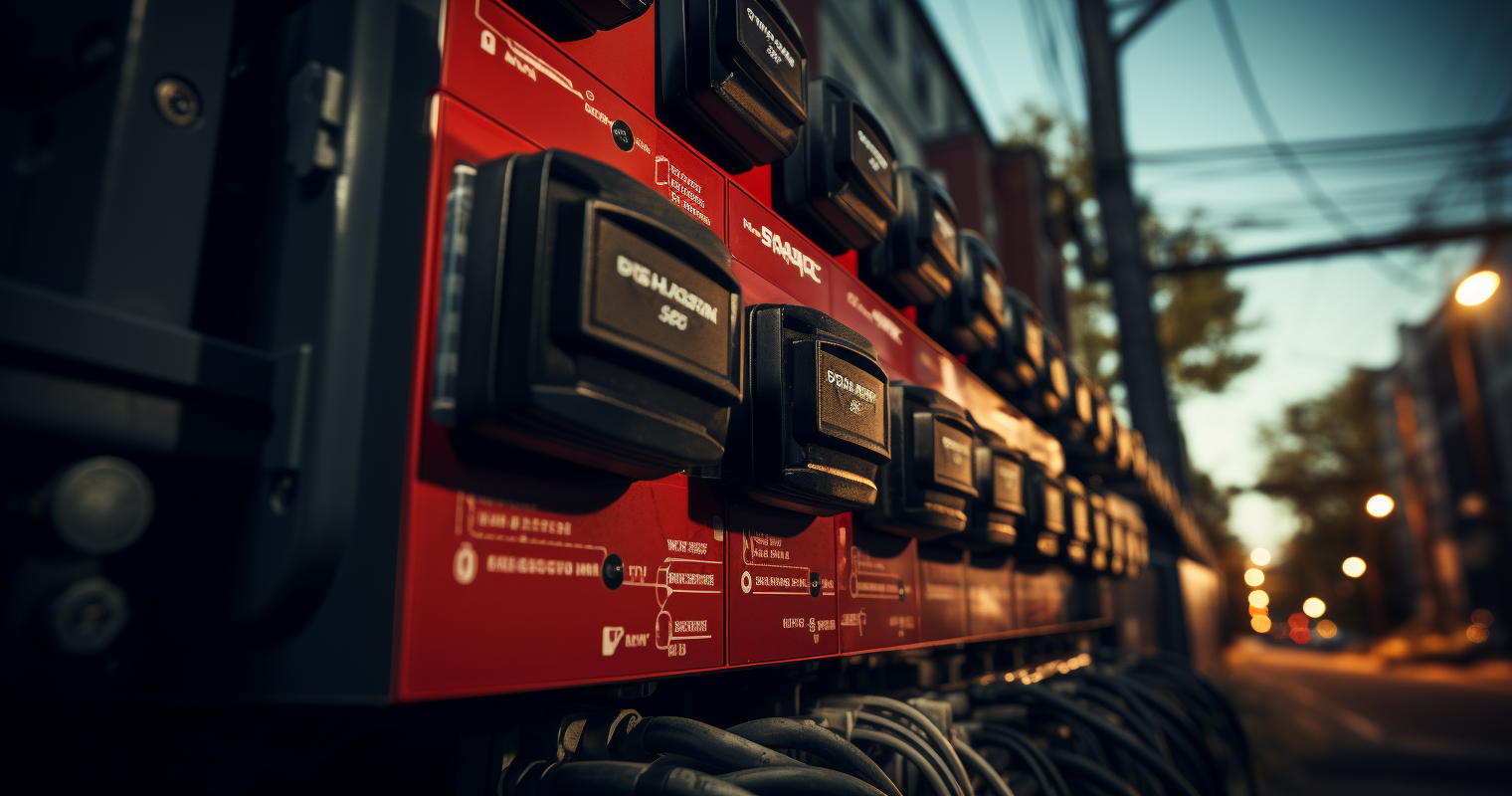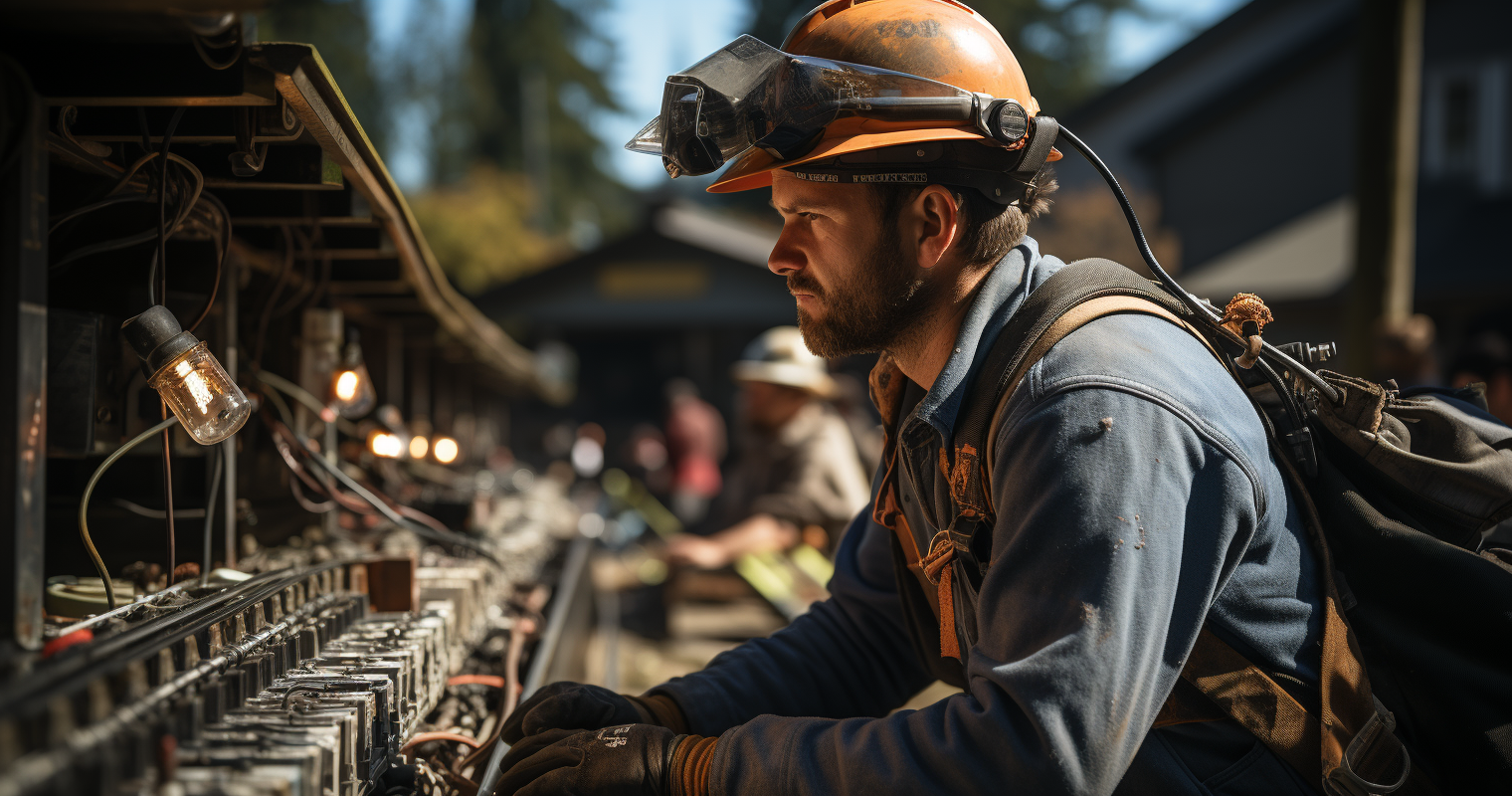Ever found yourself pondering the age-old question, “Who Is Responsible For Electrical Wire From Pole To House?” While it may seem like a game of electrical tug-of-war, the answer might be clearer than you think. Recent studies have shown that approximately 37% of homeowners are unaware of the exact boundaries of their electrical responsibilities. Don’t be a part of that statistic! Dive in to unravel this electrifying mystery and discover who holds the power (pun intended).
Understanding Electrical Wiring Infrastructure

Did you know that the concept of transmitting electricity dates back to the late 1800s? It’s been a shocking journey, pun intended!
Today, when we look up to the skies or down our streets, we often see cables, some running overhead and some tucked beneath the ground. But who is responsible for the electrical wire from pole to house? Let’s dig deeper, or should I say, let’s get electrified?
Electrical wires, whether they dangle above or lurk below, have one critical role: delivering power to our homes. It’s like the circulatory system of our cities, ensuring that energy flows uninterrupted.
There are primarily two types of electrical wiring systems:
- Overhead wiring systems – where cables hang in the air, suspended on poles. They might not win any beauty contests but are cost-effective.
- Underground wiring systems – a concealed and safer option, though a tad bit more expensive. They’re like the introverts of the wiring world; they prefer to stay out of sight!
Diving back in time, early power line infrastructures were a luxury, mostly gracing urban areas. But as suburbs grew, the wires spread, branching out like the roots of a tree.
Learn more about the Which Of The Following Statements Regarding Electrical Safety Is Correct? A Safety Quiz here.
Key Components of Power Delivery
Sure, it’s easy to just flick a switch and enjoy the magic of electricity. But behind that simple action lies a vast, complex system. Here are some of its stars:
- Electrical poles: Think of them as the tall, silent guardians. These structures support power lines and ensure they remain at a safe height. They’re like the unsung heroes, taking on the weight of our electrical demands without a complaint!
- Power lines: They come in various flavors – some are aluminum, others copper. Each serves a unique purpose, whether it’s transmission or distribution. They’re the highways of electricity, ensuring it travels smoothly from the grid to your gadget.
- Service drop and service entry cables: These are the final stages of the electrical relay race. The service drop connects the main power line to homes, while the service entry cable takes electricity that last mile, right into our homes’ inner sanctum.
If you’re ever curious about who exactly is in charge of these components and more, this classic article offers a deep dive into the responsibilities associated with electrical components.
Who Is Responsible For Electrical Wire From Pole To House?

Ever look up at those electrical wires and wonder, “If something goes wrong, who gets the dreaded phone call?” It’s a valid question, and Who Is Responsible For Electrical Wire From Pole To House is not just a query for trivia night. Let’s dissect this electric enigma.
Firstly, every homeowner should understand the magic word: the property line. This imaginary line is like the border of your home kingdom. Anything within is your realm and responsibility, while the exterior mostly falls under the utility company’s jurisdiction.
| Responsibilities | Homeowner | Utility Company |
|---|---|---|
| Electrical Equipment | Meter base, circuit breaker, and equipment within the house. | Electrical lines, transformers, meter. |
| Ownership Boundary | Interior of the house. | Exterior, up to the property. |
| Demarcation Point | Property boundary. | The boundary where the homeowner’s responsibility starts and the utility company’s ends. |
Now, homeowner responsibilities can vary, but they usually cover the electrical equipment within the house, including the meter base and the circuit breaker. Consider yourself the lord of this electric castle.
On the flip side, utility companies wield their power in managing the electrical lines, transformers, and the meter itself. Think of them as the wizards ensuring that power flows to your castle.
Ah, but there’s a catch! The demarcation point. Sounds mystical, right? It’s the boundary where the utility company’s responsibility ends and yours begins. Kind of like Platform 9¾ for electrical responsibilities.
Wondering about the specifics of ownership? Here’s a detailed guide on who owns what in the electric realm.
Potential Issues and Their Fixes
Just like any kingdom, sometimes there’s trouble in paradise. And in the realm of electrical infrastructure, there are some common culprits.
Overhead power lines, though loyal, face wear and tear over time. Squirrels scampering, birds perching, or just the harsh elements of nature can degrade them. It’s like having a moat that occasionally springs a leak.
Then there’s storm damage. Lightning bolts, while impressive, are not your power line’s best friends. Strong winds can send trees or debris crashing into the lines, causing outages or even dangerous situations.
If you ever spot a problem, don’t grab your DIY toolkit just yet! It’s vital for homeowners to:
- Document the Issue: Take photos and note down what you observe. No dragon sketches, please, we’re talking electrical problems here.
- Contact the Utility Company: If it seems like the problem is outside your property line or involves the main power line, it’s their territory.
- Consult an Electrician: If the issue lies within your property, a professional electrician will be your knight in shining armor. It’s safer than battling electrical dragons yourself.
Safety Concerns and Precautions with Power Lines
Every homeowner’s creed should be “Safety first, DIY second!” Let’s discuss the lightning-in-a-bottle topic of safety with power lines.
Imagine power lines as snakes: fascinating, powerful, and definitely something you don’t want to touch if it’s misbehaving. Damaged power lines can electrocute, cause fires, or even take down your neighborhood’s power. A little spark can lead to shocking consequences.

Ever seen those wires hanging over your backyard and thought of attaching fairy lights? Think again. Ensuring clearance for overhead power lines isn’t just a suggestion; it’s a must. No one likes surprise fireworks at their BBQ party, especially not the dangerous kind.
Planning on building that treehouse or installing a new satellite dish? When doing renovations or home improvements, always be hyper-aware of power lines. It’s better to be safe and consult than to risk being the protagonist of an electrifying tale.
For a complete guide on What Is Domestic Cleaning? A Comprehensive Explanation, head over here.
When and How to Reach Out for Repairs
Let’s set the stage. You’ve noticed an issue with your power line, and your detective instincts kick in. The first order of business? Determining if the issue is on your watch or the utility company’s. If a tree branch is menacingly close to a power line on the street, it’s the utility company’s cue. If the service cable in your backyard looks sketchy, it’s probably your call.
Now, if it’s the utility company’s turn to shine, remember to be polite. Contacting the utility company is like talking to the guardians of the electric realm. Detailed information, patience, and a dash of persistence are key. And always remember: no self-fix attempts, unless you’re Thor (and even then, best to let the pros handle it).
If you find it’s your kingdom that needs tending to, electricians are the real MVPs here. They assess and fix problems with the service entry cable like knights warding off a dragon. Always opt for a licensed electrician over your cousin Vinny who once “fixed a socket.”
Remember folks, in the electrifying game of power lines, safety should be your power move. Keep informed, stay cautious, and always know when to call in the experts.
Frequently Asked Questions
Who exactly is responsible for the electrical wire from the pole to the house?
It’s a mix between the homeowner and the utility company, depending on where the issue lies. Typically, utility companies handle lines up to the property, while homeowners manage service drops and home connections.
What is a “service drop” and who maintains it?
The “service drop” is the set of electrical cables that connect your house to the main power line. Homeowners are usually responsible for its maintenance and repair.
Can I perform DIY fixes on my service entry cables?
It’s highly discouraged. Due to the dangers associated, always hire a licensed electrician for such tasks.
How do I differentiate between overhead and underground wiring systems?
- Overhead systems have visible wires hanging from poles.
- Underground systems are hidden, with only transformers or green boxes seen above ground.
Who do I contact if a power line is down in my neighborhood?
Immediately reach out to your local utility company. It’s their responsibility to handle such situations, and they’ll act swiftly.
What precautions should I take around power lines during renovations?
Always ensure you maintain a safe distance from power lines when undertaking any renovations. If in doubt, consult with professionals.
What’s the “demarcation point” in electrical infrastructure?
The “demarcation point” is the boundary indicating where the utility company’s responsibilities end and the homeowner’s begin. It’s crucial for understanding maintenance duties.
Conclusion
Navigating the intricate web of Who Is Responsible For Electrical Wire From Pole To House can be overwhelming. But with the right knowledge, you can ensure a smooth flow of electricity and safety for your home. While understanding your responsibilities is crucial, never hesitate to consult professionals when in doubt.
Thank you for reading!
